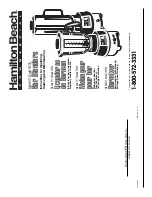
Working Gain
– The current gain measured while the booster is working under different conditions. When the Input signal is
weak, the booster will work with at the max gain, but when the device detects too much strong input signal, it will automatically
reduce the gain to avoid self-oscillation of the system.
Reduced Gain –
This value indicates how much the gain has been reduced according to the input signal strength.
This message means that the outdoor signal detected by the booster is not good enough.
Solution 1.
Check if the external antenna is connected firmly to the BS port. Make sure the external cable is not damaged.
Solution 2.
Direct the external antenna to provider’s nearest base station.
Solution 3.
Change the position of the external
antenna. Try to put it as high as possible.
Solution 4.
Check and make sure the booster you installed matches the frequency bands that your mobile provider(s) operates in
your area.
The device detected that the external antenna is too close to the internal antennas. The booster will shut down automatically to
protect the system from damage. It will restart after the problem is resolved.
Solution: Ensure good antenna isolation.
• Keep minimal distance (10 - 20m) between the outdoor and indoor antennas. The stronger input signal, the larger
distance between antennas should be.
• Never point the external and internal antennas face to face, they must aim opposite or frankly different directions to
avoid the risk of interference.
• Use mineral or metal obstacles such as walls, ceiling, metal or concrete slab, etc. to keep the antennas out of sight of
each other.
Questions & Solutions
What signal level in dBm is optimal for the correct booster functioning?
For the optimal functioning of the booster, the BS (input) readings should be between - 65 and 50 dBm. The MS (output power)
readings must be b05 and +15 dBm. Device Gain must be 65/65 dB. If the BS is lower than - 65dBm, the coverage will be
Summary of Contents for BD-400FG
Page 7: ......







































